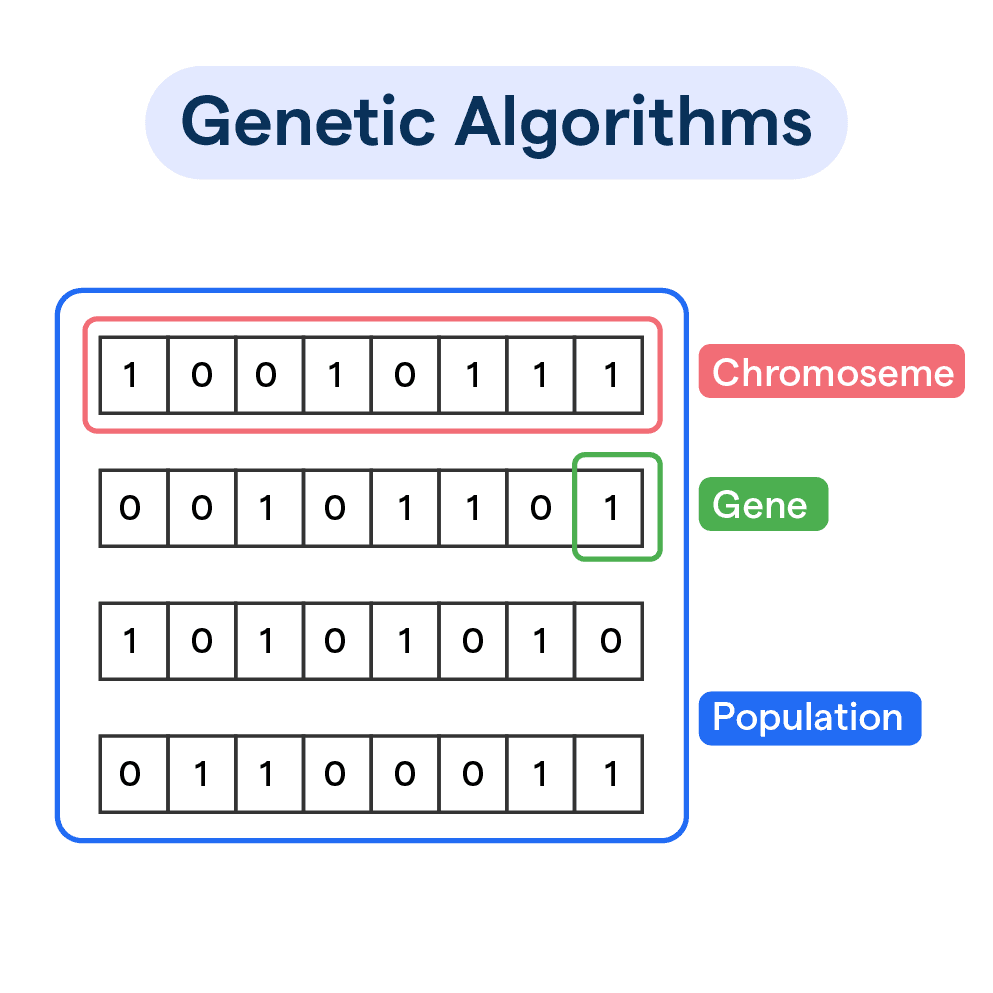What is a Genetic Algorithm?
Genetic algorithms are a type of optimization and search algorithm inspired by the process of natural selection in biological evolution.
These algorithms use principles such as mutation, crossover (or reproduction), and selection to find solutions to complex problems.
The idea behind genetic algorithms was first introduced by John Holland in the 1960s. The goal was to find ways to mimic biological processes to solve complex, multi-dimensional problems.
Genetic algorithms are powerful tools known for their ability to efficiently search large, complex, and poorly-understood spaces to provide optimized solutions.
These algorithms can be found in a wide array of applications ranging from artificial intelligence and machine learning to economics and operations research, reflecting their versatility in solving diverse problems.
Genetic Algorithm Components
In genetic algorithms, potential solutions are usually represented as a string of numbers, also known as a chromosome. Each individual number is considered a gene.
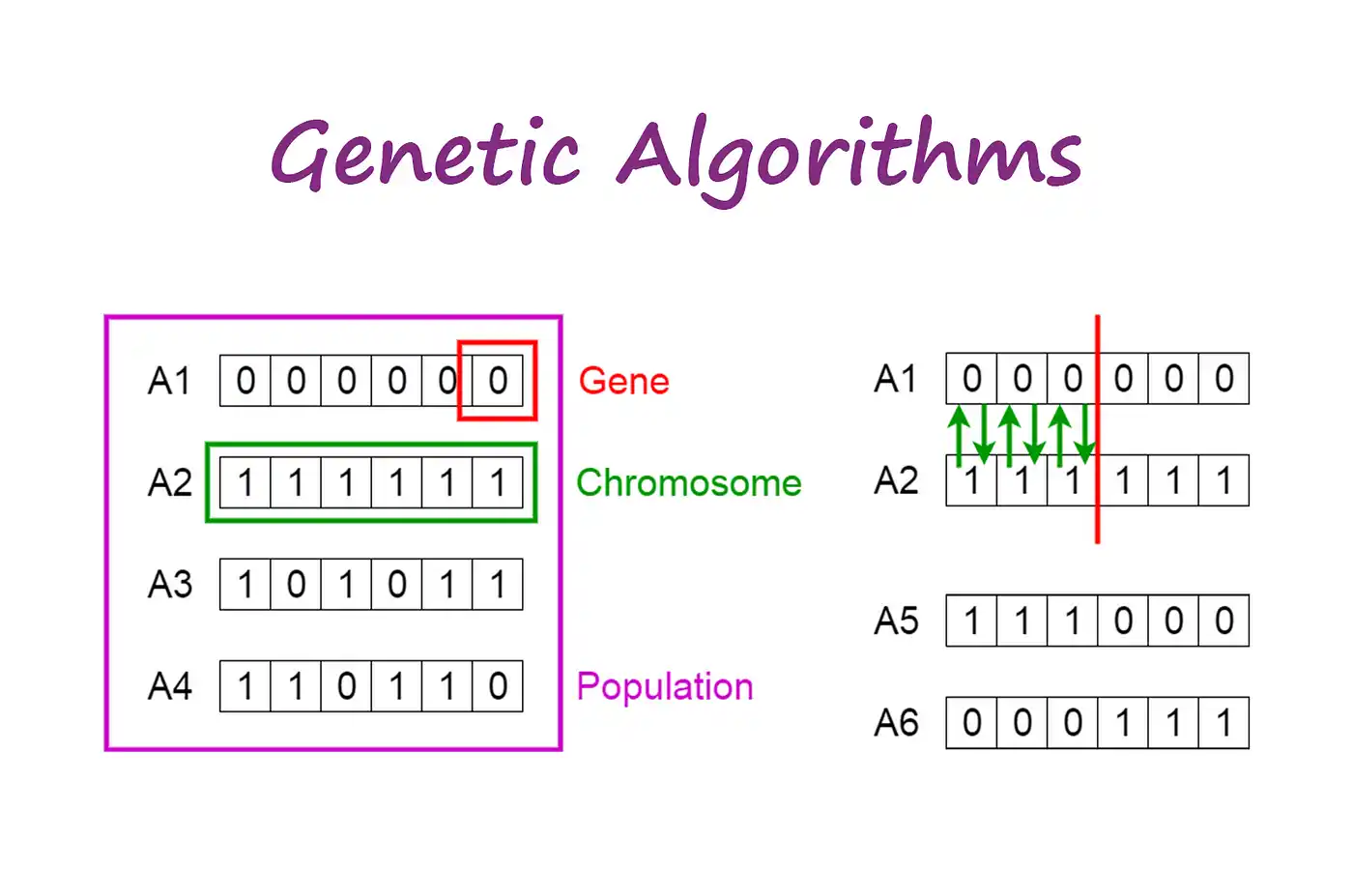
Population
This refers to a collection of possible solutions (or chromosomes) to a problem. In each iteration (or generation), genetic algorithms operate on a population of chromosomes.
Fitness Function
This function measures the quality or "fitness" of a solution in a population, guiding the search towards optimum solutions.
Operators: Selection, Crossover, Mutation
These operators mimic natural evolutionary processes. Selection chooses fit individuals, crossover combines two solutions to generate new ones, and mutation introduces small random changes into a solution.
Working Mechanism of Genetic Algorithms
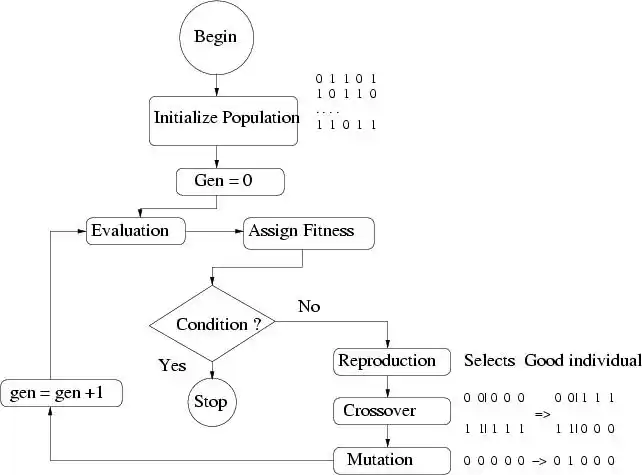
The process begins with a randomly generated population of chromosomes, each representing a possible solution to the problem at hand
- Evaluation: Each member of the population is evaluated using the fitness function. This step determines how "fit" or suitable each solution (or chromosome) is.
- Selection: Selection is carried out based on the fitness of each chromosome - "fitter" solutions have a higher probability of being selected for reproduction (crossover).
- Crossover and Mutation: In crossover, traits from two parent chromosomes are combined to produce new offspring chromosomes, while mutation introduces random changes in the offspring.
Why Use Genetic Algorithms?
Genetic algorithms have the ability to handle complex, multi-dimensional problems by searching through a large pool of possible solutions simultaneously.
Optimum Results
Because they are based on the principle of survival of the fittest, genetic algorithms are geared towards locating optimal solutions.
Handles Noise and Incomplete Data
Genetic algorithms can handle noisy and incomplete data sets, often producing acceptable solutions where other techniques might fail.
Flexible and Adaptable
These algorithms are flexible and adaptable since they do not make any assumptions about the problem space and are independent of the problem domain.
Limitations of Genetic Algorithms
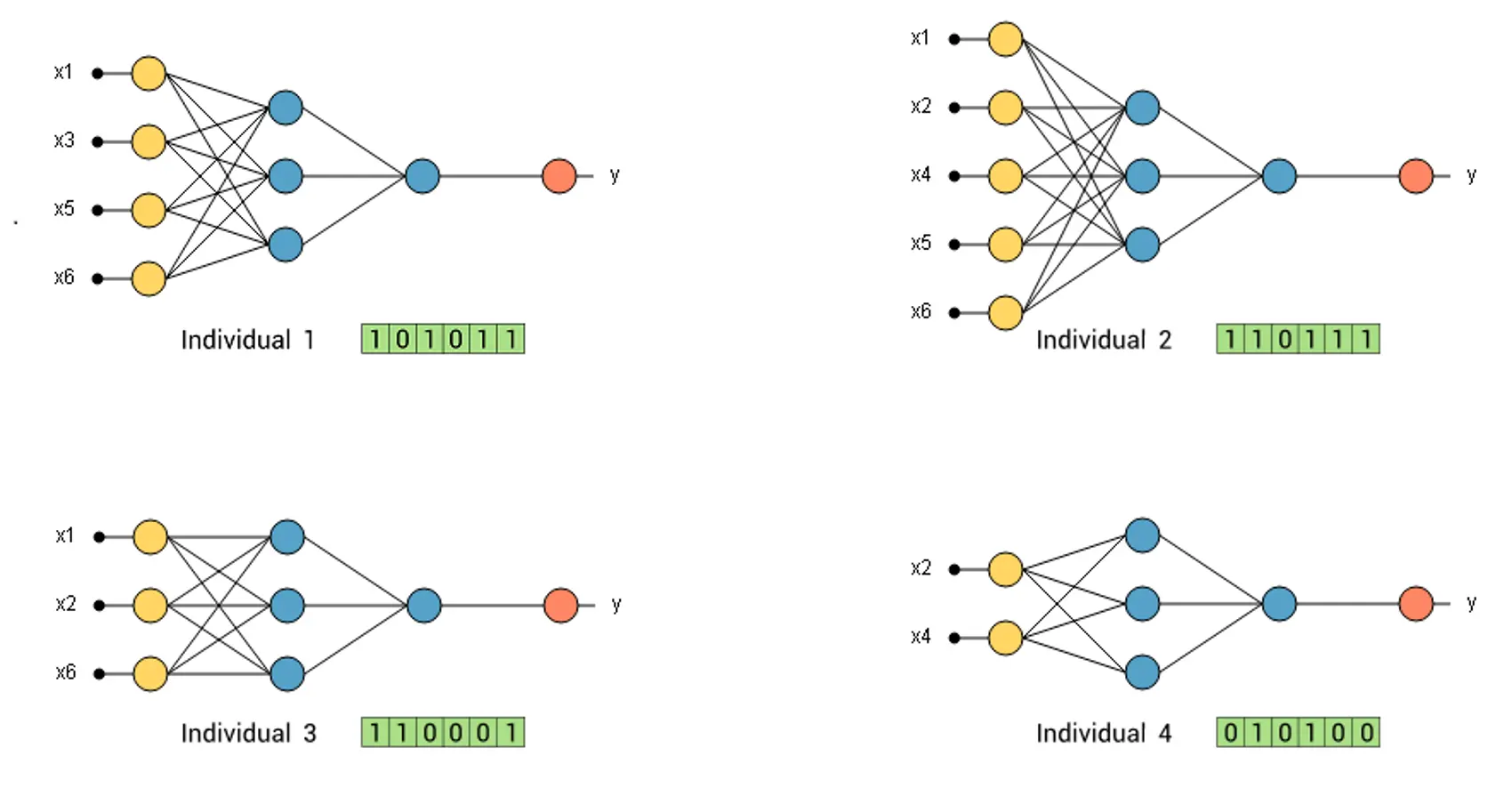
Genetic algorithms often require fine-tuning of parameters such as mutation rate, crossover rate, and population size to yield optimum results.
No Guarantee of Optimal Solution
While good at finding high-quality solutions, genetic algorithms do not always guarantee finding the absolute best solution.
Unclear Convergence Time
Convergence time, the time taken for the algorithm to reach an optimal or near-optimal solution, is not definite and differs from problem to problem.
Possibility of Pre-mature Convergence
Genetic algorithms may get stuck on suboptimal solutions, a situation known as premature convergence.
A Few Applications of Genetic Algorithms
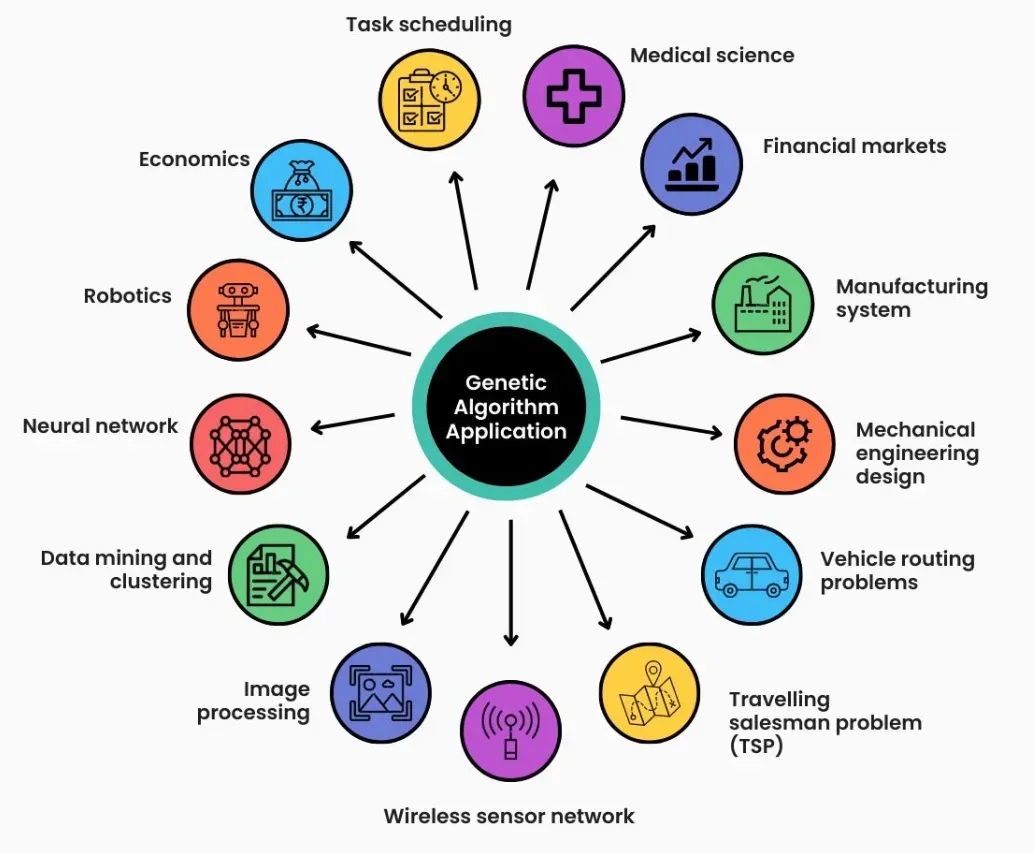
Machine Learning
Genetic algorithms are used in machine learning to optimize learning algorithms, thereby improving model performance.
Image Recognition
In image recognition, genetic algorithms play a key role in feature selection, thus enhancing recognition accuracy.
Engineering Design
Genetic algorithms are used to optimize and provide robust solutions in engineering design. The ability to quickly evaluate and generate potential solutions makes them valuable tools in this field.
Traffic and Shipment Routing
Genetic algorithms have been adopted by many sales-based companies to efficiently solve traffic and shipment routing problems.
They help save time and money by finding optimal routes.
Robotics
Genetic algorithms play a significant role in robotics. They are used to create learning robots that can perform tasks like cooking meals or doing laundry.
By mimicking the process of natural evolution, genetic algorithms help robots behave more like humans.
Frequently Asked Questions (FAQs)
How do genetic algorithms differ from traditional optimization algorithms?
Genetic algorithms use a population-based approach and mimic the process of natural evolution, while traditional optimization algorithms focus on fine-tuning a single solution.
Can genetic algorithms handle problems with a large number of variables?
Yes, genetic algorithms are well-suited for problems with many variables and large solution space, making them effective in complex optimization scenarios.
Are genetic algorithms stochastic in nature?
Yes, genetic algorithms rely on randomness in the selection, crossover, and mutation processes, which makes them stochastic and capable of exploring different solutions.
Do genetic algorithms guarantee to find the optimal solution?
No, genetic algorithms do not guarantee finding the optimal solution. They aim to find good solutions, but the outcome may rely on factors like parameter tuning and problem complexity.
How can I determine the best parameters for a genetic algorithm?
The best parameters for a genetic algorithm depend on the problem at hand. Experimentation, trial and error, and fine-tuning based on problem characteristics are common approaches to determine optimal parameters.
